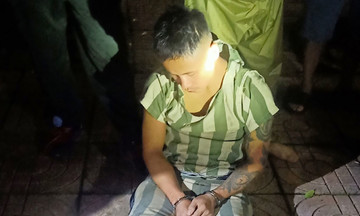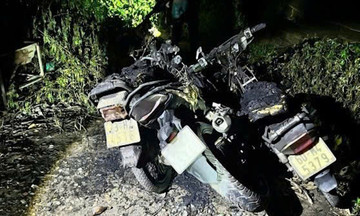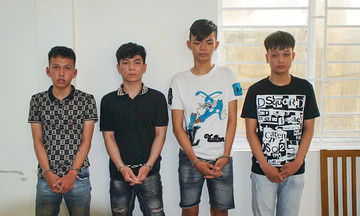In 2008, a video titled "The Enthronement Ceremony of Living Buddha Lac Tang Dan Chan" circulated, claiming that "Lac Tang Dan Chan" had been reborn as a buddha between September 5th and 7th at 4 temples in Sichuan province. The video asserted that several Tibetan Buddhist masters recognized him as a living buddha.
This supposed living buddha's real name was Wang Xingfu, a Han Chinese man living in Jinan City, Shandong province. 20 years earlier, Wang had two public identities: a prison guard in Jinan and a qigong master.
During the 1980s, Wang, as a qigong master, taught classes and earned 7,000 CNY per month. In 1997, he was fired from his prison job due to frequent absences and unexplained leave.
In the mid-1990s, Wang transitioned from qigong master to Buddhist layman but remained unsatisfied. By 2006, he devised a plan to use Tibetan Buddhism as a facade, proclaiming himself a reincarnated living buddha who had studied for years in Tibetan monasteries.
In 2008, Wang manipulated his way into becoming a disciple of a monk at Nga Nhuoc Temple in Shiqu County. He enlisted the help of a fellow disciple, Lu Rong, to fabricate his identity, forging identification documents that transformed him from Han Chinese Wang Xingfu into Tibetan Lac Tang Dan Chan.
With his new identity, Wang, aided by Lu, orchestrated an elaborate "enthronement" ceremony in Shiqu in 2008, declaring himself the Living Buddha Lac Tang Dan Chan. Thus, Wang completed his transformation from qigong master to the Living Buddha Lac Tang Dan Chan.
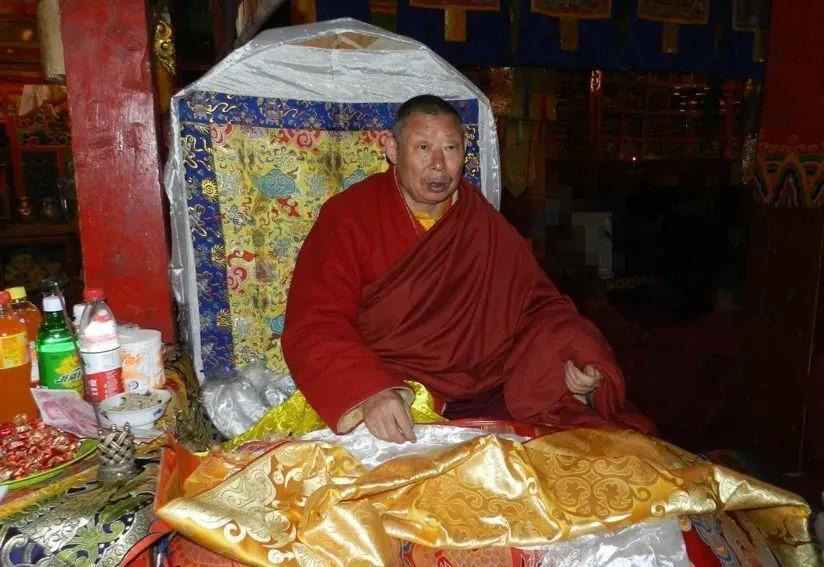 |
Wang Xingfu performing the "enthronement" ceremony, a ritual for the succession of reincarnated living buddhas in Tibetan Buddhism. Photo: QQ |
Wang Xingfu performing the "enthronement" ceremony, a ritual for the succession of reincarnated living buddhas in Tibetan Buddhism. Photo: QQ
To publicize his fabricated status, Wang staged a grand enthronement ceremony attended by over 200 followers. He filmed the event and instructed his disciples to use Photoshop to create images of him seated on a lotus flower, with a halo above his head. He also had bronze statues of himself cast for his followers to worship.
The Institute of Religious Studies at the China Tibetology Research Center confirmed that Wang's claims were entirely fabricated. "Wang Xingfu merely donned a religious cloak and has no genuine connection to Tibetan Buddhism," a representative stated.
According to Living Buddha Drukhang Thubten Khedrup, vice president of the Buddhist Association of China, Wang's self-proclaimed reincarnation violated fundamental Tibetan Buddhist doctrines and rituals, as well as regulations issued by the State Administration for Religious Affairs. Therefore, he held no legitimate title as a living buddha.
Authorities accused Wang of defrauding his followers of 198 million CNY (over 720 billion VND) over 10 years using his false identity.
Wang met with disciples at his over 40-year-old former home in Jinan, presenting himself as a humble monk devoted to Buddhist principles. However, Jinan police discovered his actual residence: a lavish, nearly 1,000-square-meter villa.
Wang owned 12 properties across China. Police seized large sums of cash, numerous bank cards, gold bars, luxury goods, and fine wines from these locations.
How did Wang accumulate such wealth?
According to Jinan police, since beginning his activities as "Living Buddha Lac Tang Dan Chan," Wang established 8 core centers in Shenyang, Beijing, Jinan, and Chengdu. These centers had numerous branches, recruiting over 3,000 disciples across more than 20 provinces, municipalities, and autonomous regions. Each disciple made annual offerings to Wang. He promoted the idea that offerings would bring multiplied blessings, like "sowing a single seed and reaping a ten-thousand-acre harvest."
Besides accepting offerings, Wang charged exorbitant fees for Buddhist names, conversions, and empowerment rituals (a ceremony involving pouring water over the head), costing over 50,000 CNY for a 4-level package. After Wang's "rituals," ordinary blue ceramic vases purchased online for just over 100 CNY became "Dragon King's nectar vases," resold to followers for thousands of CNY each.
A week before his arrest, Wang collected 470,000 CNY from disciples in just seven days through empowerment ceremonies, blessings, and voluntary offerings. He meticulously sorted and bundled new banknotes, storing them in a safe.
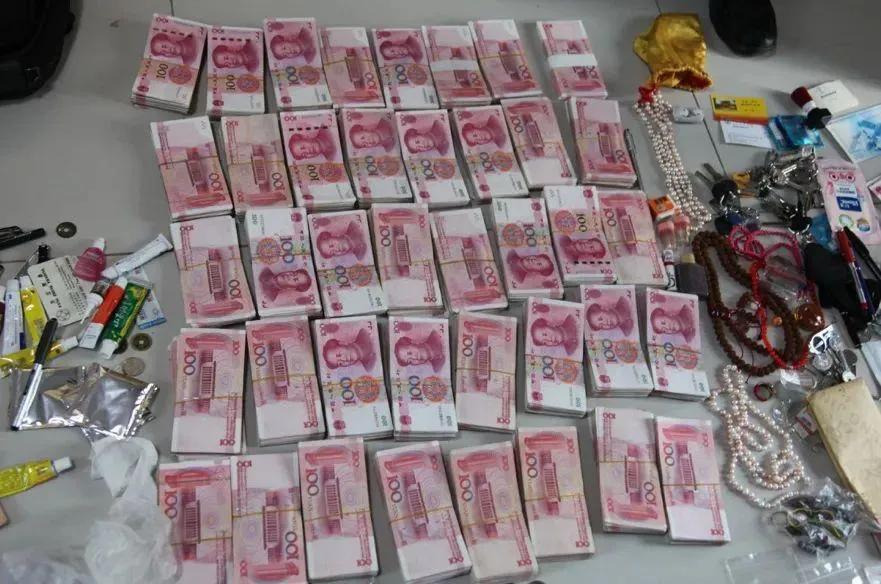 |
Large sums of cash found by police in Wang Xingfu's home. Photo: QQ |
Large sums of cash found by police in Wang Xingfu's home. Photo: QQ
To further his profits, Wang invested in companies, placing disciples as legal representatives. These companies sold Buddhist items at 10 to 100 times their actual value, and illegally printed Buddhist scriptures and CDs for sale to followers nationwide.
Wang's illicit organization, with its strict structure and clear hierarchy, became his personal "money-printing machine."
Wang and his family lived extravagantly. His unemployed son enjoyed luxury goods, drove expensive cars, and gifted over 200,000 CNY to a female live streamer.
Beyond financial fraud, Wang exploited his fabricated status to manipulate, rape, and sexually harass female disciples.
To control them, Wang required each disciple to handwrite an oath on their "conversion certificate," vowing lifelong obedience. The oath threatened those who betrayed him or his teachings with lightning strikes, snake bites, suffocation, or death by vehicle, with retribution in this lifetime.
After the oaths, Wang indoctrinated them with cult-like doctrines, demanding their compliance and viewing their bodies as "instruments" for his use.
During his teachings at various centers, Wang instructed organizers to arrange for 1 or 2 young female disciples to attend to him each night, providing opportunities for rape and harassment.
Wang targeted victims based on their personal information and level of devotion. One disciple recalled Wang attempting to assault her, claiming it was "the fastest way to break down the barrier between you and your master, just like a socket and plug must be connected for a spiritual connection."
Due to the oaths and indoctrination, many endured repeated abuse without resistance. Over 100 female disciples are estimated to be victims, but only a few came forward after Wang's arrest.
Wang's rise from self-proclaimed qigong master to living buddha, operating illegally nationwide, was largely due to his senior disciple, Lu Rong. As the head of Nga Nhuoc Temple's management board, Lu facilitated Wang's discipleship under his own master, making them fellow disciples. They then colluded in their fraudulent scheme.
Investigations revealed that Lu helped Wang obtain two fake ID cards during his transformation into Lac Tang Dan Chan.
To convince followers, Lu treated Wang as a genuine living buddha whenever he brought disciples to Nga Nhuoc Temple. He also used his position to issue certificates declaring Wang as the Living Buddha Lac Tang Dan Chan. Their collusion made it difficult for disciples to discern the truth.
In August 2016, a disciple in Nanning, Guangxi publicly accused Wang of being a fake living buddha engaged in fraud and sexual harassment, sparking online controversy. Lu, using the temple's authority, issued a statement supporting Wang, describing him as a "pure master who never sought personal gain or fame."
In return, Wang transferred a total of 37.24 million CNY to Lu via bank transfers and cash.
In June 2017, Jinan police arrested Wang and 7 key members of his organization.
In 2021, the Jinan Intermediate People's Court convicted Wang of organizing and using a cult to obstruct law enforcement, illegal business operations, rape, and sexual harassment. He received a combined sentence of 25 years.
Lu Rong was sentenced to 6 years.
In January 2016, China first published an online list of officially certified "living buddhas" to prevent fraud. The public can access this list for verification.
Tue Anh (CCTV, Xinhua)







